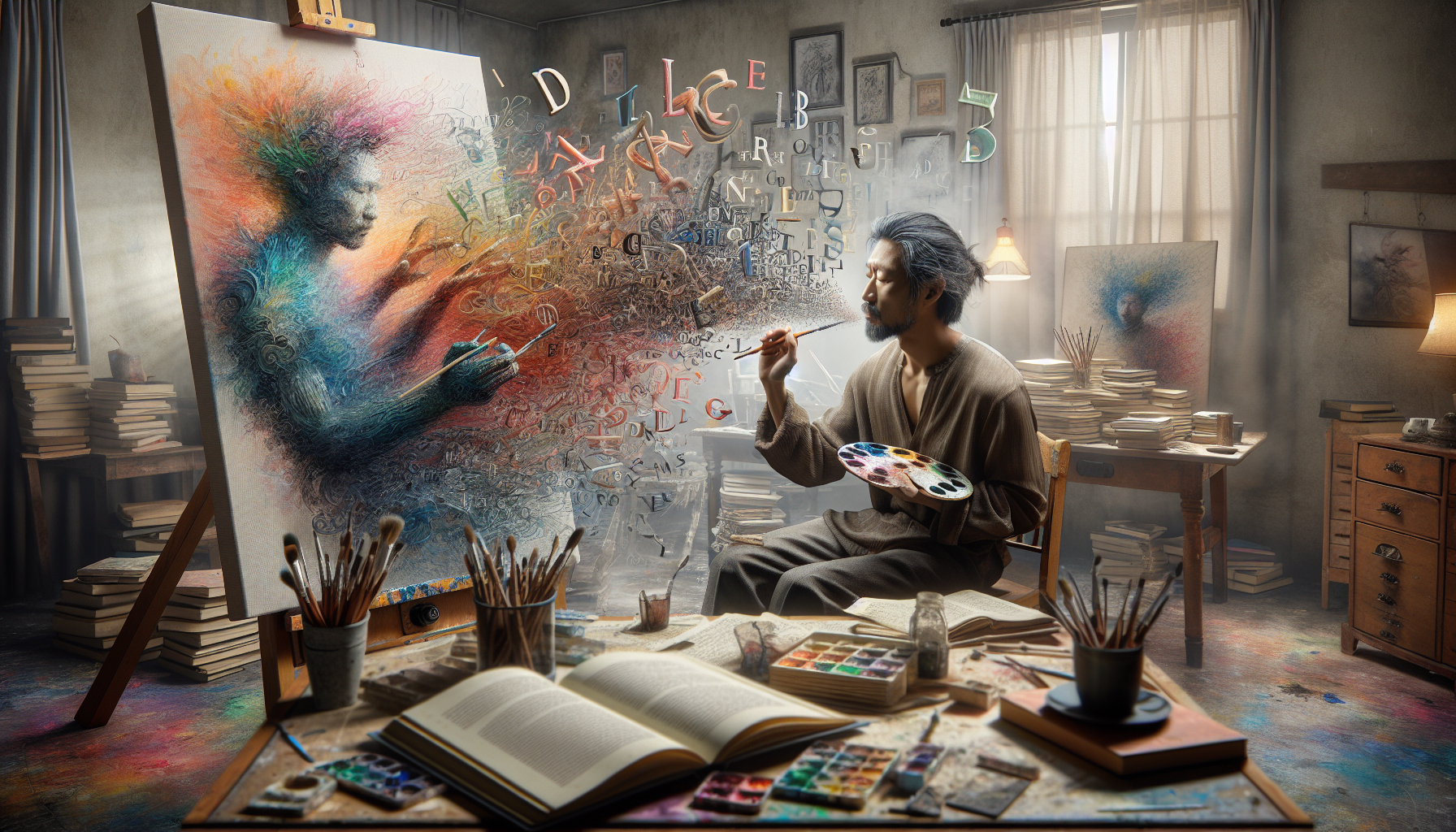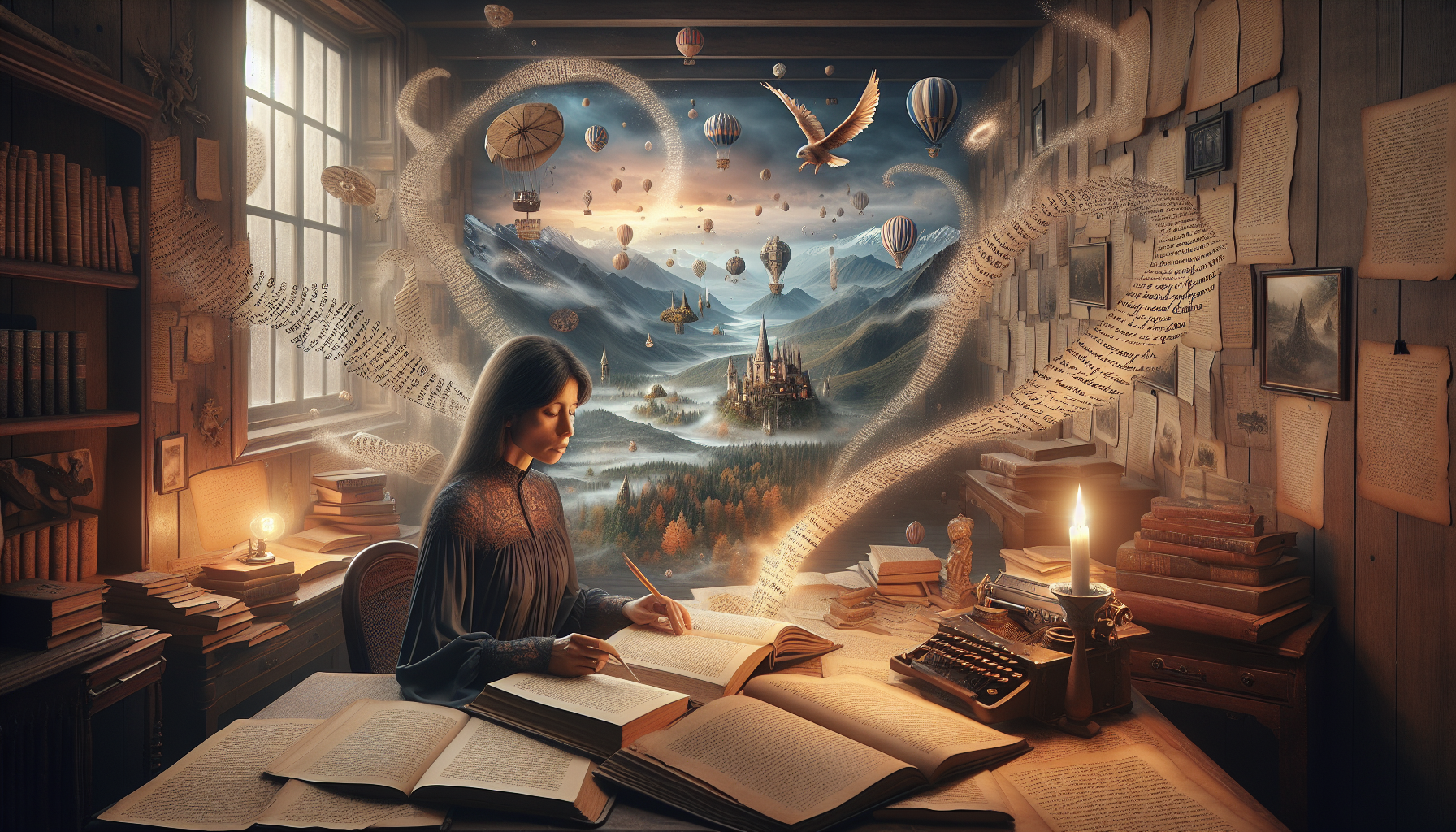In a world where cinematic magic often transcends the boundaries of reality, filmmakers continually seek new ways to immerse audiences in their narratives. One of the most captivating techniques employed is the creation of invented languages, a creative endeavor that transforms mere words into an entire cultural tapestry woven into the fabric of a film. These languages, far from being mere gibberish or sound effects, are meticulously crafted to breathe life into the fictional worlds they inhabit, offering viewers a deeper, more authentic experience. From the melodic Elvish of Middle-earth to the guttural Dothraki of Essos, invented languages serve as bridges to otherworldly realms, inviting audiences to step beyond their linguistic comfort zones and embrace the unfamiliar. 🌍✨
This article delves into the fascinating realm of invented languages in cinema, exploring how filmmakers and linguists collaborate to create these linguistic masterpieces. We will journey through the creative processes behind some of the most iconic languages in film, examining the intricate balance between linguistic authenticity and artistic expression. You’ll discover how these languages not only enhance the storytelling but also contribute to world-building, providing depth and realism to characters and cultures that exist solely in the imagination. We will also touch upon the challenges faced by actors in mastering these tongues and the unique ways in which audiences engage with these cinematic dialects.
Prepare to embark on a linguistic adventure that unravels the magic behind your favorite films. We will explore the pioneering works of language creators like J.R.R. Tolkien and Marc Okrand, delve into the phonetic structures and grammatical rules that govern these fictional languages, and discuss the cultural impact they have had on audiences worldwide. Whether you’re a language enthusiast, a film aficionado, or simply curious about the art of storytelling, this exploration promises to enlighten and entertain, highlighting the remarkable synergy between language and cinema. So, sit back, relax, and get ready to discover how movies masterfully bring invented languages to life on the big screen. 🎬🗣️
The Fascination with Invented Languages in Cinema
Invented languages, also known as constructed languages or conlangs, have captivated audiences in cinema for decades. Their allure lies not just in the exotic sounds and complex grammar but in their ability to transport viewers to otherworldly realms. By designing languages from scratch, filmmakers can give depth to fictional cultures, enhancing the immersive experience. One might wonder why not just use existing languages. The answer lies in the desire to create an authentic and self-contained universe, where every detail, from architecture to speech, contributes to storytelling. This dedication can be seen in movies like “Avatar,” where Na’vi language plays a crucial role, or in “The Lord of the Rings,” where Elvish languages provide cultural authenticity.
The art of creating a language for film often involves linguists and language enthusiasts. For instance, Marc Okrand developed the Klingon language for “Star Trek,” ensuring it had a fully functional grammar and vocabulary. These languages aren’t mere gibberish; they’re intricately designed to be coherent and meaningful. They often draw from existing languages, yet introduce unique elements to make them stand out. The complexity of these languages can be daunting, yet they serve an essential purpose: to flesh out the characters and the worlds they inhabit. Take, for example, Dothraki in “Game of Thrones.” Developed by David J. Peterson, it adds layers to the Dothraki culture, emphasizing their warrior ethos and nomadic lifestyle.
Moreover, invented languages can also serve as a storytelling device, highlighting themes of communication and miscommunication. They create barriers between characters, challenge assumptions, and often lead to pivotal plot developments. For instance, in “Arrival,” the alien language Heptapod is central to the narrative. Its non-linear structure challenges human perceptions of time and reality, pushing the protagonist to redefine her understanding of language and life. The use of language as a narrative tool showcases the power of communication and the potential for misunderstanding in cross-cultural exchanges.
Table: Popular Invented Languages in Movies
| Language | Movie | Creator | Unique Features |
|---|---|---|---|
| Na’vi | Avatar | Paul Frommer | Complex grammar, tonal |
| Klingon | Star Trek | Marc Okrand | Guttural, aggressive tones |
| Dothraki | Game of Thrones | David J. Peterson | Rich in cultural context |
| Elvish (Quenya, Sindarin) | The Lord of the Rings | J.R.R. Tolkien | Euphonic, poetic |
🎬 For a deeper dive into the complexities of these languages, watch this fascinating breakdown on YouTube: “The Art of Language Invention” by The Langfocus Channel.
The Role of Linguists in Movie Language Creation
The involvement of professional linguists in crafting movie languages cannot be overstated. Their expertise ensures that the language isn’t merely a collection of sounds but a fully fleshed-out communication system. This involves creating grammar rules, vocabulary, and often writing systems. A linguist’s work can be akin to creating a miniature culture, providing depth and authenticity to the on-screen world. For instance, Paul Frommer, who designed the Na’vi language for “Avatar,” ensured that the language was learnable, allowing fans to engage with it beyond the film. This engagement can create dedicated fan communities, further embedding the language into popular culture.
Linguists often draw on their knowledge of phonetics, syntax, and semantics to ensure that the language sounds believable. They consider factors like phonological balance, ensuring that the language sounds are pleasing or fitting for the cultural context. In some cases, linguists may even invent entirely new sounds, contributing to the uniqueness of the language. The process can be iterative, involving collaboration with directors and writers to ensure the language aligns with the film’s narrative vision. This collaboration can lead to creative solutions, enhancing the narrative impact of the language.
One intriguing aspect of language creation is its ability to convey the psychological or social nuances of a fictional society. The choice of words, syntax, and even the sounds can suggest cultural values or social hierarchies. For instance, in the film “Valerian and the City of a Thousand Planets,” the language of the alien race Pearls was designed to reflect their harmony with nature. This linguistic harmony underscores their peaceful, nature-oriented ethos, contrasting with the film’s more technologically driven societies.
How Linguists Craft Invented Languages
- Phonetics: Choosing sounds that fit the cultural and aesthetic context.
- Grammar: Creating rules that dictate how words interact, ensuring coherence.
- Vocabulary: Developing words that reflect cultural values and narrative needs.
- Writing System: Designing alphabets or scripts, often unique to the language.
Understanding the meticulous process behind language creation can deepen appreciation for the films that employ them. It highlights the intersection of art, science, and storytelling, showcasing the lengths filmmakers go to create believable worlds. 🎥 Engage with this process and gain insights from experts by watching “The Secret Language of Film” by Nerdwriter1 on YouTube.
Invented Languages as Cultural Tools
Invented languages serve as powerful cultural tools within films, offering insights into the fictional societies they represent. They go beyond mere linguistic constructs, acting as symbols of identity, resistance, and evolution. Consider the Elvish languages in “The Lord of the Rings.” Tolkien, a philologist himself, imbued these languages with historical depth, linking them to the ancient past of Middle-earth. This linguistic depth adds richness to the Elven culture, making it feel timeless and ethereal. The languages reflect their creators’ values, from the harmony of the Elves to the brutal efficiency of the Orcs.
Moreover, invented languages can symbolize cultural resistance and adaptation. In dystopian narratives, language often becomes a tool for control or rebellion. For instance, in George Orwell’s “1984,” Newspeak is designed to limit free thought, showing how language manipulation can affect societal control. Similarly, in films like “Arrival,” language becomes a tool for understanding and bridging divides. The Heptapod language in “Arrival” exemplifies this, as its unique structure challenges human perception, ultimately fostering a new way of thinking.
Invented languages also allow filmmakers to explore themes of linguistic evolution and diversity. They can highlight how language adapts to environmental or social changes, offering a reflection on real-world linguistic phenomena. In “Star Wars,” the diverse range of languages spoken across the galaxy showcases the vastness and variety of its universe, reinforcing the idea of a rich, interconnected tapestry of cultures. This portrayal resonates with audiences, encouraging them to consider the diversity and adaptability of language in their own world.
By examining these elements, it becomes clear how invented languages are more than just artistic flourishes. They are integral to the narrative, culture, and themes of the films they inhabit. 🎬 Explore how these languages serve as cultural reflections by watching “The Power of Language in Film” by Wisecrack on YouTube.

Conclusion
Creating a compelling and immersive cinematic experience is an art form that transcends visual storytelling. One of the most intriguing and often overlooked aspects of filmmaking is the development and integration of invented languages. In our exploration of “Lost in Translation: How Movies Masterfully Bring Invented Languages to Life on the Big Screen,” we’ve journeyed through the intricate processes that bring authenticity and depth to fictional worlds, examining their cultural, emotional, and narrative impact.
The inception of an invented language in film is not merely a linguistic exercise; it is an essential tool for world-building. Our discussion illuminated how these languages serve as a bridge, transporting audiences into the unique atmospheres of the stories being told. By delving into the complexities of language creation, we revealed how filmmakers collaborate with linguists and language creators to ensure that these dialects are not only believable but also enhance the cultural richness of their respective universes.
A prime example discussed was the creation of the Elvish languages in “The Lord of the Rings” series. J.R.R. Tolkien, a philologist himself, constructed languages that were steeped in history and cultural relevance, providing a rich tapestry for Peter Jackson’s film adaptations. This dedication to linguistic authenticity significantly contributed to the films’ success, as audiences were captivated by the depth and reality of Tolkien’s world.
Similarly, the Klingon language in “Star Trek” serves as a cultural cornerstone for the series, showcasing how language can define a civilization’s identity, values, and history. The meticulous development of Klingon, complete with its own grammar and vocabulary, underscores the importance of linguistic detail in making a fictional species feel as real as their human counterparts.
Through these examples, we’ve seen how invented languages are not just a creative flourish but a narrative device that supports character development and storytelling. The Na’vi language in “Avatar,” for instance, reflects the harmony and connection of the Na’vi people with their environment, enhancing the film’s themes of unity and conservation. This linguistic layer invites viewers to engage more deeply with the characters and their struggles, fostering empathy and understanding.
Moreover, our exploration touched on the modern advancements in language creation, particularly the use of technology to streamline and expand the creative process. From software-assisted linguistic development to online communities dedicated to conlangs (constructed languages), the tools available to filmmakers have never been more robust. These innovations not only facilitate the creation of new languages but also encourage fan interaction and participation, extending the film’s universe beyond the screen.
The cultural impact of invented languages extends beyond their immediate narrative function. They often inspire real-world linguistic studies and have even been adopted by enthusiasts, further blurring the line between fiction and reality. The community that has formed around these languages is a testament to their lasting influence and the human desire to connect through shared experience and expression.
In conclusion, the art of crafting invented languages is a vital component of the filmmaking process, offering audiences a deeper, more immersive experience. By understanding the intricacies of these languages, we gain insight into the meticulous world-building efforts that make these cinematic universes so compelling. The dedication and creativity of filmmakers and linguists in bringing these languages to life underscore the importance of linguistic authenticity in storytelling.
As we reflect on the enchanting world of invented languages, it’s essential to recognize the impact they have on our viewing experience and cultural perception. They challenge us to expand our understanding of language as a tool for connection and creativity, inviting us to appreciate the artistry involved in their creation.
We encourage you to think about the films that have captured your imagination and consider how the languages within them have shaped your experience. Share your thoughts, favorite films, or even your attempts at learning an invented language in the comments below. Let’s celebrate the creativity and skill that goes into bringing these languages to life and continue the conversation about their significance in cinema.
Don’t forget to share this article with fellow film enthusiasts and language lovers who might appreciate this fascinating aspect of storytelling. By engaging with the content and spreading the word, you help to keep the conversation alive and encourage further exploration into the magical world of invented languages in film.
For those interested in learning more about the art of language creation, you might find resources like the Language Creation Society languagecreation.org and David J. Peterson’s website artoflanguageinvention.com valuable. These platforms offer insights into the processes and techniques used by professional language creators, providing a deeper understanding of this unique and captivating craft.
As we close our exploration of this topic, remember that the languages we encounter, whether real or imagined, have the power to transport us to new worlds and broaden our perspectives. Embrace the magic of invented languages and the role they play in storytelling, and let them inspire you in your own creative endeavors. 🌟
Toni Santos is a visual cryptographer and artisan, weaving hidden meaning into every line, curve, and composition. His creations delve into the mysterious world of secret codes, symbolic alphabets, and invented languages, transforming visual art into a rich tapestry of communication beyond words.
Guided by a lifelong fascination with hidden knowledge and the power of symbols, Toni explores how meaning can be embedded, concealed, and rediscovered. From constructed glyphs to encoded illustrations, each piece he creates serves as a portal to a deeper layer of understanding — one that invites curiosity, interpretation, and wonder. His work bridges the intuitive with the intellectual, the mystical with the methodical.
With roots in handcrafted artistry and a background in visual semiotics, Toni fuses form and function to create works that whisper rather than shout. These are not just images — they are visual riddles, poetic encryptions, and artifacts of a language yet to be spoken.
As the creative mind behind Vizovex, Toni offers a space where art meets encryption, and viewers are invited to decode, reflect, and engage. Through symbolic design, visual lexicons, and explorations into constructed languages, he builds a universe where meaning is layered, intentional, and always slightly out of reach — waiting to be discovered.
His work is a tribute to:
The unseen languages that shape our perception
The art of hidden messages and symbolic systems
The thrill of decoding and the beauty of mystery
Whether you’re a language lover, a codebreaker at heart, or someone drawn to the enigmatic, Toni invites you to explore a world where expression transcends convention — one glyph, one message, one mystery at a time.




